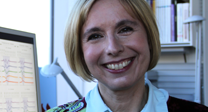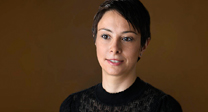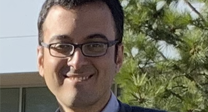Biomedical Computing
Biomedical computing combines the diagnostic and investigative aspects of biology and medical science with the power and problem-solving capabilities of modern computing. Computers are used to accelerate research learning, simulate patient behavior and visualize complex biological models.
Jeff Weiss
Computational Biomechanics
Orly Alter
Computational Biology
Tamara Bidone
Computational Models
Simulations of Biological Systems
Multi-Physics Models of Cancer Cells
Centers and Labs:
- Center for Integrative Biomedical Computing
- Muskuloskeletal Research Laboratory
- Genomic Signal Processing Lab
- Computational Biomechanics Group
Funded Research Projects:
Publications in Biomedical Computing:
   A Computational Steering Model Applied to Problems in Medicine C.R. Johnson, S.G. Parker. In Supercomputing 94, IEEE Press, pp. 540--549. 1994. |
 The Body Electric C.R. Johnson, R.S. MacLeod, M.A. Matheson, C. Zimmerman. In Discover Magazine, pp. 72--77. February, 1993. |
 Computational Medicine: Bioelectric Field Problems C.R. Johnson, R.S. MacLeod, M.A. Matheson. In IEEE Computer, Vol. 26, No. 26, pp. 59--67. Oct, 1993. |
 Visualization of Bioelectric Fields R.S. MacLeod, C.R. Johnson, M.A. Matheson. In IEEE Computer Graphics and Applications, Vol. 14, pp. 10--12. Jul, 1993. |
 A 3D Cellular Automata Model of the Heart P.B. Gharpure, C.R. Johnson. In IEEE Engineering in Medicine and Biology Society 15th Annual International Conference, IEEE Press, pp. 752--753. 1993. |
 Computer Simulations Reveal Complexity of Electrical Activity in the Human Thorax C.R. Johnson, R.S. MacLeod, M.A. Matheson. In Computers in Physics, Vol. 6, pp. 230--237. May/June, 1992. |
 Visualization of cardiac bioelectricity --- a case study R.S. MacLeod, C.R. Johnson, M.A. Matheson. In IEEE Visualization `92, pp. 411--418. 1992. |
  Visualization Tools for Computational Electrocardiology R.S. MacLeod, C.R. Johnson, M.A. Matheson. In Visualization in Biomedical Computing, pp. 433--444. 1992. |







